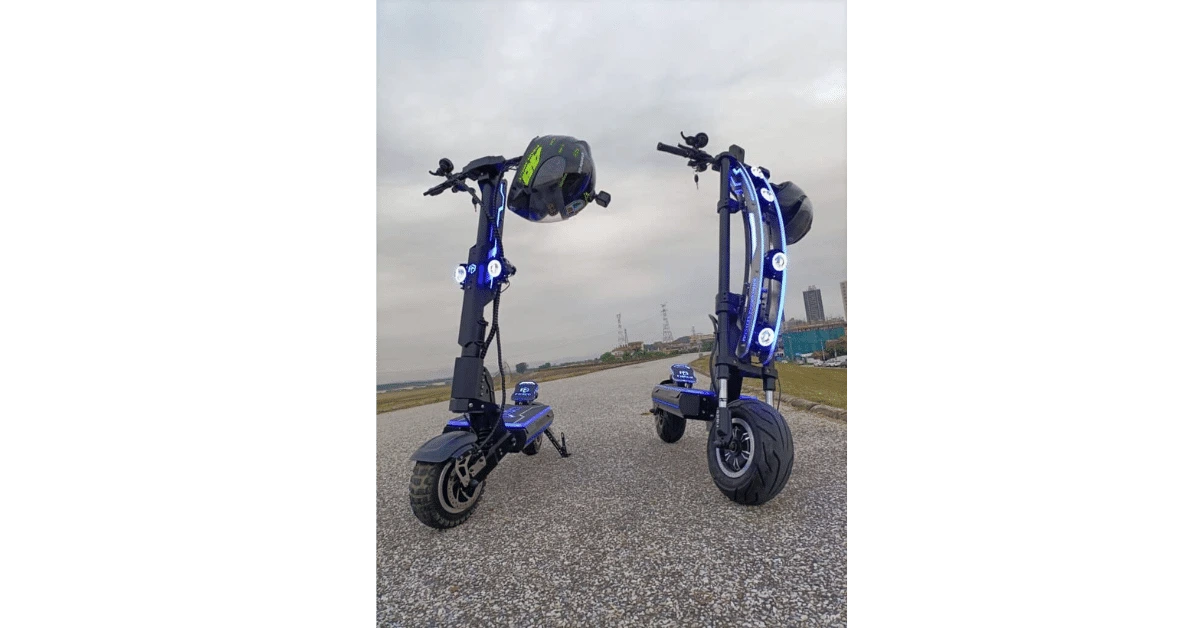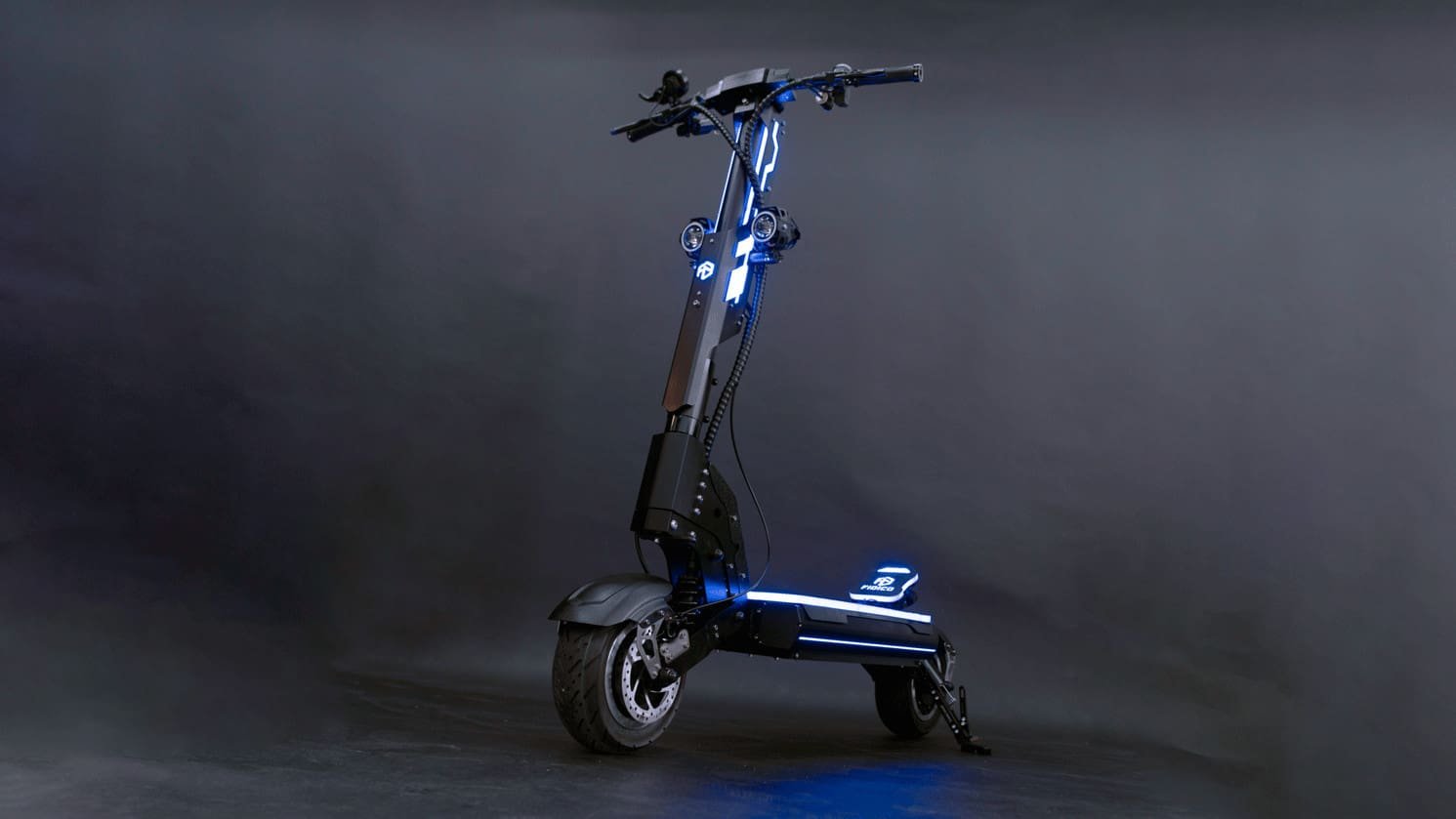Why do electric scooter over heat
With the rapid growth of urban mobility and the increasing adoption of eco-friendly transportation solutions, electric scooters have become an increasingly popular choice for commuters and city-dwellers alike.
While these electric vehicles offer numerous advantages, such as reduced emissions, lower operating costs, and ease of use, they are not without their challenges. One common issue faced by electric scooter users is overheating, which can not only impact the scooter’s performance but also lead to potential safety hazards.
In this blog, we will delve into the reasons behind electric scooter overheating and explore the various factors that can contribute to this problem.
By understanding the root causes of overheating, scooter owners can take preventative measures to ensure their vehicles remain in optimal working condition, extending the lifespan of their investment and enhancing the safety of their rides.
5 reasons that may overheat your electric scooter
- Overloading
- Inadequate ventilation
- Malfunctioning thermal management system
- Prolonged high speed riding
- Extended uphill riding
1. Overloading:
Overloading an electric scooter refers to exceeding the maximum weight capacity specified by the manufacturer. This can significantly contribute to the overheating of the scooter’s components and adversely affect its performance. The weight capacity is determined based on various factors, such as the scooter’s motor power, frame strength, and suspension capabilities, all of which are designed to operate efficiently within specific weight limits.
When an electric scooter is overloaded, the motor has to work harder to generate the necessary torque and power to move the increased load. This extra exertion puts substantial strain on the motor, causing it to generate more heat than usual. Prolonged exposure to excessive heat can lead to motor damage, which in turn may result in reduced performance, decreased battery life, and even motor failure.
Moreover, overloading can also adversely affect the scooter’s battery. A heavier load requires more energy to be drawn from the battery, causing it to discharge faster and potentially leading to overheating. Overheating can cause irreversible damage to the battery’s cells, reducing its overall capacity and shortening its lifespan.
Furthermore, an overloaded scooter can experience increased friction and pressure on its wheels, bearings, and other mechanical components, generating additional heat in these areas. This not only contributes to overheating but can also lead to premature wear and tear of these parts.
2. Inadequate ventilation:
Inadequate ventilation in an electric scooter can contribute to overheating by limiting the airflow around the scooter’s components, such as the motor, battery, and electronic controller. Proper ventilation is crucial for maintaining optimal operating temperatures, as it allows heat generated during the scooter’s operation to dissipate into the surrounding environment.
Without sufficient airflow, the heat can accumulate within the scooter, causing its components to overheat. This can lead to a decline in performance, a reduction in battery life, and even damage or failure of critical parts.
In some cases, overheating due to poor ventilation can also create a safety hazard, as it may result in thermal runaway, a dangerous chain reaction in which a battery’s temperature increases uncontrollably, potentially leading to combustion or explosion.
Ensuring that an electric scooter has proper ventilation, by maintaining clear air intakes and outlets and regularly cleaning any filters or vents, is essential to prevent overheating and to promote the longevity and safety of the scooter’s components.
3. Malfunctioning thermal management system
A malfunctioning thermal management system can be a significant cause of overheating in electric scooters, as it directly impacts the scooter’s ability to regulate and dissipate heat generated during operation.
Thermal management systems are designed to maintain the optimal operating temperatures of critical components, such as the motor, battery, and electronic controller. These systems employ various cooling methods, which may include passive cooling (e.g., heat sinks and natural convection), active cooling (e.g., fans or liquid cooling), or a combination of both.
When a thermal management system malfunctions, it can no longer effectively regulate the temperatures of the scooter’s components. This can lead to a rapid buildup of heat within the scooter, causing components to overheat and potentially suffer damage. Overheating can result in reduced performance, decreased battery life, and even complete failure of critical parts.
A malfunctioning thermal management system may be caused by several factors, including damaged or blocked cooling components, faulty sensors or controllers, or issues with the cooling medium (e.g., low coolant levels in liquid-cooled systems).
Regular maintenance and inspection of the scooter’s thermal management system are essential to ensure its proper functioning and to prevent overheating.
4. Prolonged high-speed riding
Electric scooters may overheat due to prolonged high-speed riding due to a combination of factors including increased power demand, thermal management limitations, and mechanical stresses. As an advanced language model, I will provide a professional analysis on this phenomenon in the subsequent text.
At high speeds, electric scooters require a greater amount of power to overcome air resistance and maintain their velocity. The electric motor, battery, and associated electronics work harder to deliver this increased power demand, resulting in the generation of excess heat. Inefficient energy conversion processes, such as the conversion of electrical energy to mechanical energy, further exacerbate this issue by producing additional waste heat.
Thermal management systems within electric scooters are designed to dissipate heat and maintain a safe operating temperature. However, when subjected to prolonged high-speed riding, these systems can be overwhelmed, leading to suboptimal cooling and a gradual rise in component temperatures. Passive cooling mechanisms, such as heatsinks and natural air circulation, may be insufficient under these conditions.
Mechanical stresses induced by high-speed riding, including vibrations and friction between moving parts, can also contribute to overheating. Excessive wear may lead to increased friction and a consequent rise in temperature, further straining the thermal management system. Additionally, inadequate maintenance or subpar component quality may exacerbate these issues, reducing the overall heat tolerance of the scooter.
5. Extended uphill riding
Electric scooters can overheat as a result of extended uphill riding due to the increased demands placed on the motor and battery system. When traversing an incline, the motor is required to work harder to maintain the scooter’s speed and overcome the force of gravity acting against it. This increased workload results in the generation of more heat, which in turn elevates the temperature within the motor and its surrounding components.
The battery system is also affected during uphill riding as it needs to supply more power to meet the higher energy requirements of the motor. This leads to a faster discharge rate, and consequently, increased heat generation within the battery cells. Additionally, the process of converting electrical energy to mechanical energy within the motor is not 100% efficient; some energy is inevitably lost as heat, further contributing to the overall temperature increase.
Furthermore, the scooter’s cooling system may not be designed to dissipate heat effectively during sustained uphill riding. In many electric scooters, passive air-cooling is employed, relying on the natural flow of air over the components to dissipate heat. In steep inclines or extended uphill rides, the decreased speed of the scooter, coupled with the increased heat generation, can overwhelm the cooling system’s capacity to maintain optimal temperatures.
Overheating can cause performance degradation and pose potential safety risks, such as thermal runaway in the battery, which may lead to fires or component failures. To mitigate these risks, modern electric scooters are often equipped with temperature sensors and thermal management systems that monitor and regulate component temperatures, ensuring safe and reliable operation.
Final Thought
In conclusion, electric scooters, despite their numerous advantages, can face overheating issues due to various factors such as overloading, inadequate ventilation, malfunctioning thermal management systems, prolonged high-speed riding, and extended uphill riding.
Understanding the root causes of overheating is crucial for electric scooter owners to take appropriate preventative measures, ensuring the longevity and safety of their vehicles.
Regular maintenance and inspection of key components, including the motor, battery, cooling system, and mechanical parts, are essential to keep electric scooters in optimal working condition.
By being aware of the factors contributing to overheating and taking the necessary steps to address them, scooter owners can not only extend the lifespan of their investment but also enhance the safety and performance of their rides, making electric scooters an even more sustainable and reliable choice for urban mobility.








